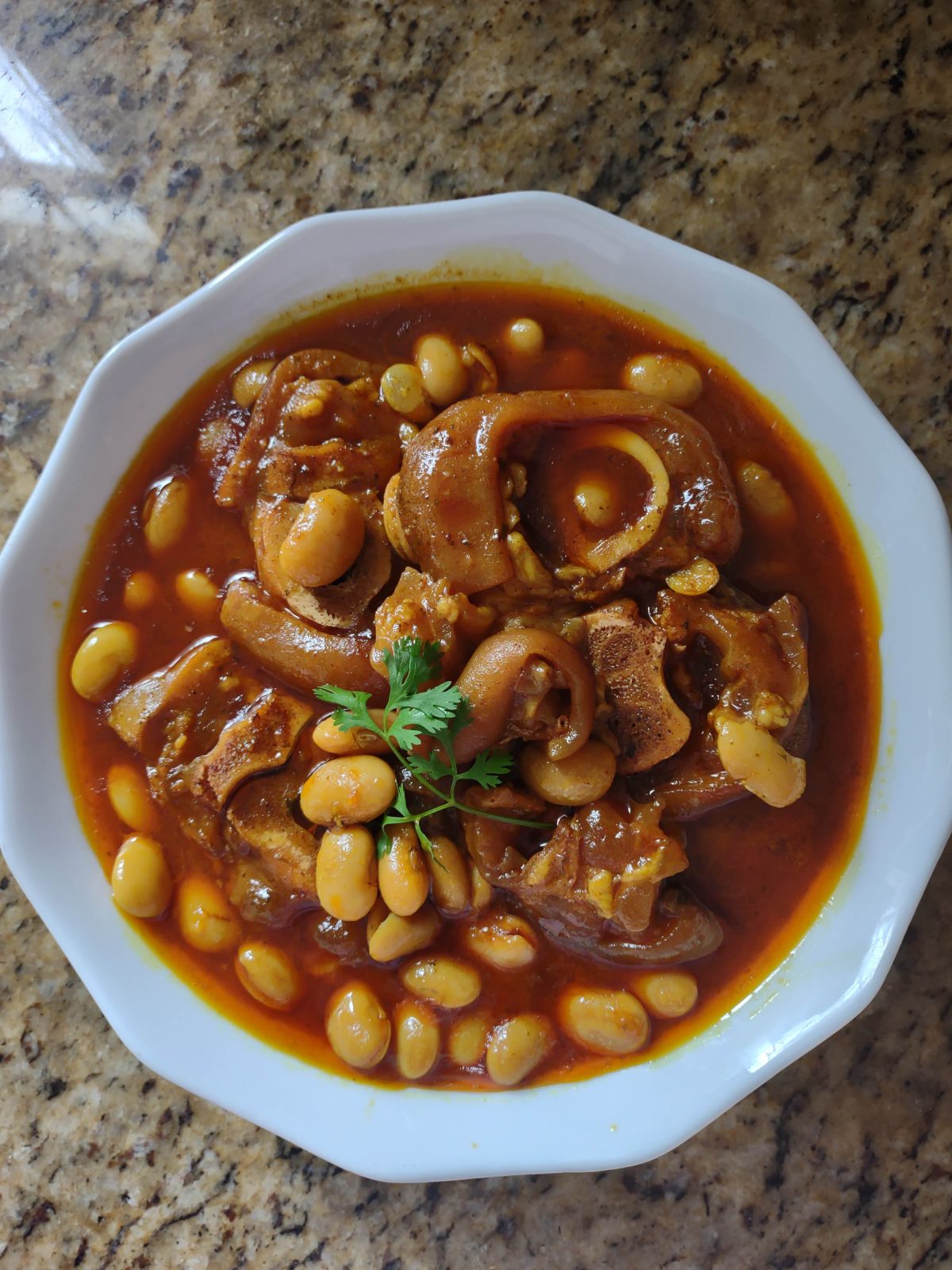 I know you’ve had and like cow heel soup. And we know cow heel is a must-have for many of us when making Pepperpot. However, have you ever had curry cow heel or as the Jamaicans say, curry cow foot? If you haven’t, you should try it… issa ting! A delicious ting!
I know you’ve had and like cow heel soup. And we know cow heel is a must-have for many of us when making Pepperpot. However, have you ever had curry cow heel or as the Jamaicans say, curry cow foot? If you haven’t, you should try it… issa ting! A delicious ting!
In the days when sugar was king, the roasts, fillets and other prime cuts of beef or pork went to the Great House. Our ancestors would get the tails, head, tripe, and feet. They were called the ‘fifth quarter’. All of these ‘fifth quarter’ pieces require long, slow cooking that turn into succulent meats that are must-have signature ingredients for many of our favourite, beloved local dishes, that help define our cuisine.
A couple of weeks ago my butcher had some fresh local cow heel and I bought some thinking that I was going to make soup, but by the time I got home, I wasn’t feeling like having soup anymore. What else can I make with the cow heel I wondered (apart from the obvious – Pepperpot), and came upon Jamaican Curry Foot. Every image of the dish was inviting and appetising. The various hues of curry drew me in; some brick red while others more of green-gold yellow hue. The other thing that I found appealing about curry cow foot was the presence of big, plump creamy butter beans in the curry. I became excited and read through various recipes to see if there anything particular or different to the making of the curry. I didn’t find anything so I was sticking to my own way of cooking curry. Unfortunately, I couldn’t make the curry the same day because I had no butter beans. The curry would have to wait for a couple of days.
The day arrived and I set about making the curry – the kitchen filled with the aroma of spices and herbs united in a paste cooked low and slow to provide the important foundation to the curry. In went the cow heel to be coated in the paste and left to cook and be infused with the flavours. Topped off with boiling water and given a good stir, the pot was set to pressure. I cooked the curry low and slow in the pressure cooker for 45 minutes then I added the drained rinsed butter beans and cooked it (without pressuring) for another 10 minutes. Shutting off the heat, I let the curry sit for half an hour before diving in.
A tip: Curry is good at any time and can be eaten immediately, however, letting it rest just after cooking, even for 15 minutes really helps set the flavour. It is one of the many reasons that curry is excellent the day after.
While Jamaicans serve their curry goat with rice and peas, curry cow foot is served with white rice. I prefer, and like, all my curries with white rice. I don’t want the peas getting in the way of the curry. But that’s a thing for another day (lol). I dished out my food and set about eating. I found it strange as I reached for a spoon to eat. I prefer to eat curry and rice with my fingers. Somehow, this curry seemed to be one of those things that required a spoon so that you can scoop up the rice, beans, and a piece of soft cow heel to make the perfect bite-combo. I never attempted to eat the curry with my fingers, the spoon really is the best tool to eat the curry.
The curry was lovely – the morsels of softened tendon and gel-like meat balanced well with the chew of the beans along with the rice. It was a different curry vibe for me and I enjoyed it. I ate it with rice and on other occasions with boiled, mashed yams, equally good. I think it would be nice with boiled cassava too. Overall, it made for a filling and satisfying meal.
What I would say, is that unlike some curries that you can see being a weekly thing, I don’t think curry cow foot could be that way for me. Cow heel is a texture thing so I’d make it when I am feeling for that kind of thing. Unlike soup where there are other “obstacles” such as ground provisions, vegetables, and dumplings, with the curry, the cow heel is front and centre so there is a lot of it.
If, like me, you can’t get enough curry and are always on the lookout for a curry to try, definitely give this Jamaican favourite a try.
Cynthia





